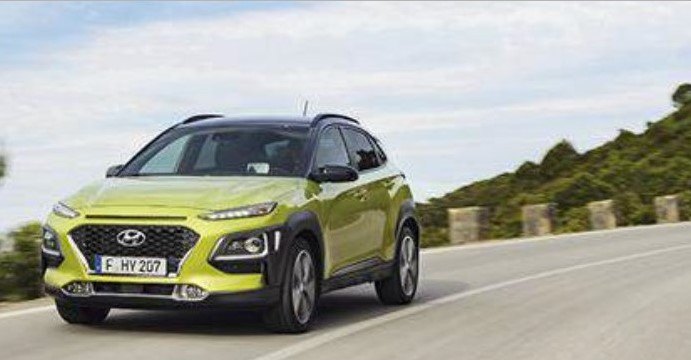Not So Scantily Clad: 2018 Hyundai Kona Accidentally Drops the Towel

The 2018 Hyundai Kona, which American subcompact crossover aficionados will be able to drool over in person in early 2018, will see its first spotlights during a Korean launch event tomorrow. However, much like private celebrity photographs, the Kona has bared all on the internet a day before the big reveal.
Hyundai hasn’t provided much in the way of specifications, though it has teased us with ever-revealing photos of its new global model for some time. For the automaker, a B-segment crossover isn’t timely — it’s overdue. Utility vehicles are the company’s top focus as the market moves away from the vehicles that sent Hyundai sales surging in the post-recession era.
So, what do you think?
The low-resolution images, which look sourced from a manufacturer’s media package, appeared on Hyundai-blog, providing us with a a good, hard look at the Kona. First impressions? Wow, that’s interesting — many might say “questionable” — use of cladding.
While the short overhangs and fender bulges are commonplace among the segment’s occupants, the industry has more or less moved away from garish overuse of cladding. Thank General Motors excess for that. However, the Kona’s cladding is apparently so voluminous, some of it has migrated onto the rear doors and fascia — the taillamps seem unable to wrestle themselves free from its matte gray grip.
The front displays the same face we’ve seen before, albeit in purposely shadowed form. Thin LED running lights are positioned atop the main headlamps, flanking a broad mouth filled with black honeycomb. An air inlet in the lower fascia carries a third set of lights — foglights — tucked into the corners of the slit.
All told, it’s a lot of lights and openings. Funky? Busy? Buyers will be the judge. Wearing pea soup-like yellow-green paint, the vehicle seen here clearly wants to show off an all-black roof that extends down the A-pillars but leaves the C-pillars mainly untouched. No doubt Hyundai believes this gives the little Kona a dash of sporty flair.
So, what engine can Americans expect? We’ll have a better idea tomorrow, but a turbocharged 1.4-liter four-cylinder and a dual-clutch transmission are strong powertrain possibilities.
Inside, the Kona displays a much more conventional layout, with an infotainment screen rising from the dashtop, rather than set into the center stack. Body color accents abound.
When Hyundai’s Kona lands in the U.S., both it and the Kia Stonic will have to beat off the Mazda CX-3, Chevrolet Trax and upcoming Ford EcoSport in the non-premium subcompact crossover segment.
[Images: Hyundai-blog.com]

More by Steph Willems
Latest Car Reviews
Read moreLatest Product Reviews
Read moreRecent Comments
- Bd2 Mark my words : Lexus Deathwatch Part 1, the T24 From Hell!
- Michael S6 Cadillac is beyond fixing because of lack of investment and uncompetitive products. The division and GM are essentially held afloat by mega size SUV (and pick up truck GM) that only domestic brainwashed population buys. Cadillac only hope was to leapfrog the competition in the luxury EV market but that turned out disastrously with the botches role out of the Lyriq which is now dead on arrival.
- BlackEldo I'm not sure the entire brand can be fixed, but maybe they should start with the C pillar on the CT5...
- Bd2 To sum up my comments and follow-up comments here backed by some data, perhaps Cadillac should look to the Genesis formula in order to secure a more competitive position in the market. Indeed, by using bespoke Rwd chassis, powertrains and interiors Genesis is selling neck and neck with Lexus while ATPs are 15 to 35% higher depending on the segment you are looking at. While Lexus can't sell Rwd sedans, Genesis is outpacing them 2.2 to 1. Genesis is an industry world changing success story, frankly Cadillac would be insane to not replicate it for themselves.
- Bd2 Even Lexus is feeling the burn of not being able to compete in the e-ATP arena.




































Comments
Join the conversation
I like it! It's got that funky Citroen C4 Cactus thing going on, and I think our market needs more of that.
NO, No, NO, I would not be seen dead in that vehicle.